|
Both
World Wars saw numerous shipping
causalities in this area. In the First World War this was a favourite hunting ground of German U-boats which on occasion entered
the area and attacked passing ships. Most of the wrecks which now
litter the sea bed in the "graveyard of a thousand ships" are from
this period.
In the Second
World War more ships went to the bottom of this "graveyard" not only because of submarine
attacks but also because of the great
minefield which stretched across St. Georges Channel from the Saltees
to the coast of Devon. Many
of these mines broke loose and exploded on impact with the rocks and
lower cliffs of the Great Saltee. Evidence can still be seen today of
these explosions from Sebber Bridge to Hell Hole.
List of shipwrecks off the Saltee Islands (PDF FILE)
The S.S.
Idaho
The S.S. Idaho struck Coningbeg Rock on
1st June 1878. She
had left New York bound for Liverpool. with 63 passengers and 82 crew.
Good order prevailed and all aboard reached the boats safely before
the Idaho sank, 22 minutes after striking the rock. The only
casualties were 54 horses. The survivors spent a cold night on the
Saltees until they were rescued the next day. At an inquiry on
26/6/1878 the captain was censured for faulty navigation and
maintaining speed.
The wreck was located in 1976. Its anchor was raised in 1988 and now adorns
the bow of the Guillemot Museum Ship at Kilmore Quay.
Local Newspaper article 1st June
1878 (PDF FILE)
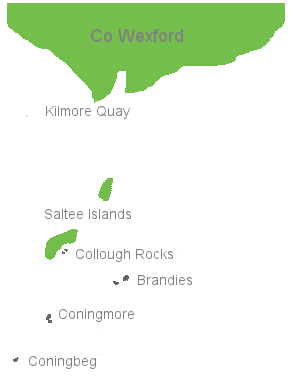
Coningmor
Rock:
This is the larger of the two Coning Rocks, it can be seen as it lies
above the water. The area is full of seals.
The general depth is around 20 - 30m.
Coningbeg Rock:
The remains of a lighthouse foundations may be seen around the bottom as
well as parts of an unknown wreck. Like it's larger namesake its prone
to strong currents.
THE S.S.
LENNOX
The S.S. Lennox was sunk when she was chased by a submarine
onto rocks at the back of the Great Saltee. The
wreck lays in 10 - 18m of water at the back of the Great Saltee parallel to the Collough Rocks.
Her crew of 45 were saved by the
Kilmore lifeboat. Among her crew were 34 Chinese men, who sold their
watches in local pubs and shops. Boiler lining bricks, marking the
Lennox, are still found at the spot. THE S.S.
ARDMORE
On a voyage from Cork to Fishguard with a cargo of
Livestock the Ardmore was sunk on 12th November 1940 by
a mine in the area off the Great Saltee Island. Major
damage to the midships section indicates the ship sank
almost immediately with the loss of all onboard
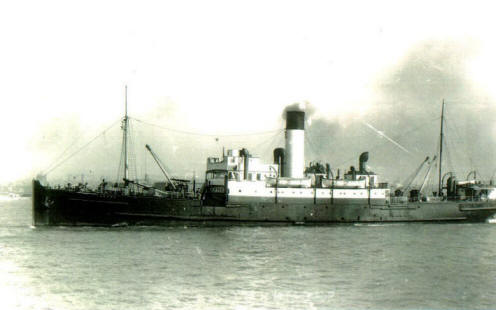
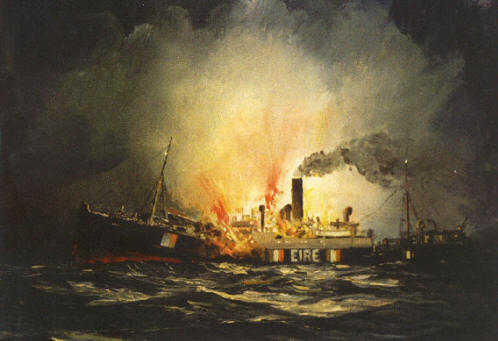
The SS Ardmore left
Cork for Fishguard at approximately 20.00 Hours on the
night of Monday 11th of November 1940. Research from
intelligence documentation indicates that the Ardmore
was last seen in Cobh as she proceeded from Cobh Harbour.
She was logged passing the Ballycotton look out
post at 22.20 hours. She was then logged by the
Knockadoon Head look out post at 22.55 hours
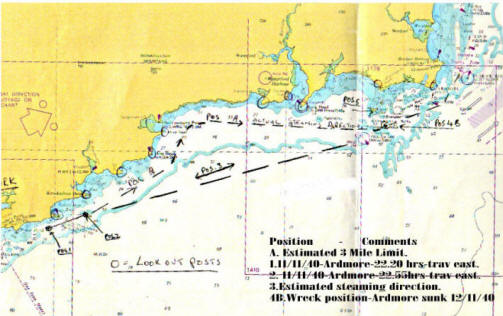
Nothing more was heard
from the Ardmore until wreckage was spotted coming
ashore on the 20th of November 1940 off St. David's
Head in South Wales. Wreckage including
dead animals was also washed up on the rocks of the
Great Saltee.
German
Military Archives indicate that there was no U- Boat activity
within this area from the 11th to the 12th of November 1940.
It was
concluded that the Ardmore and her crew of 24 were lost as a
result of a mine explosion to her mid-section off the Great
Saltee Islands, Co. Wexford between 24.00 hours and 04.00 hours
on or about Tuesday morning the 12th of November 1940.
THE S.S.
LANABRONE
On June 21st 1942 the
S.S. Lanabrone went aground on the Great Saltee at the
ring.
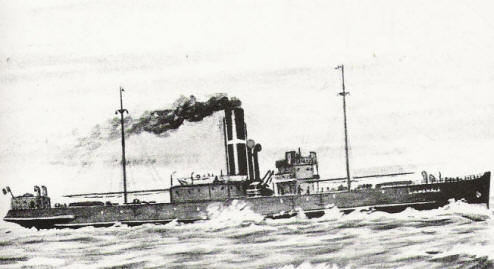
Top of Page |